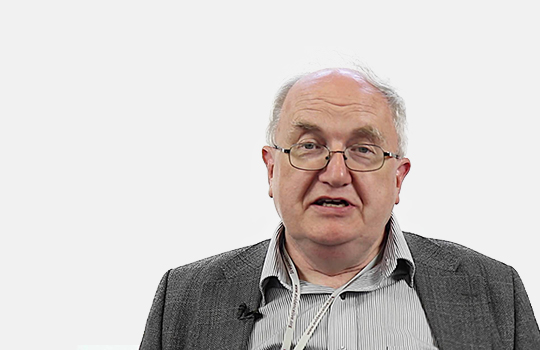Richard Lehman reviews the latest research in the top medical journals
 NEJM 15 Feb 2018
NEJM 15 Feb 2018
Being economical with yellow fever vaccine
Yellow fever is caused by a mosquito-borne flavavirus which used to haunt the southern edges of Europe and the USA, giving rise to nineteenth-century epidemics in places like Barcelona, Gibraltar, New Orleans, and Memphis. Now it is firmly contained in a belt of subtropical and tropical regions in South America and Africa: it still kills about 30,000 people a year. As an English GP, all I know about yellow fever vaccine is that it causes complaints from exotic travellers because of its cost. It really is a very good vaccine. The WHO keeps six million vials in stock, but these can quickly run out during epidemics. Hence this trial of splitting the vials and giving a fifth of the standard dose when stocks were running low in Kinshasa (DR Congo) in 2016. The lower dose produced very high immunoprotection, and this strategy can be used in future epidemics, though I suspect it won’t be offered to tight-fisted British tourists.
Renal angiography protection
“In this multinational, randomized, controlled trial in patients with chronic kidney disease who were undergoing angiography, we found no benefit of intravenous sodium bicarbonate over intravenous sodium chloride or of oral acetylcysteine over oral placebo for the prevention of death, need for dialysis, or persistent kidney impairment at 90 days or for the prevention of contrast-associated acute kidney injury or other secondary end points.” This was a good big publicly funded trial of simple but important interventions, with a nice clear result which should put this 20-year old debate to bed. Clinicians, think of a similar trial you would like to do in your field, and go ahead and do it.
Nusinersen
Nusinersen is one of the most expensive drugs in the world. It was developed partly through support from a spinal muscular atrophy charity, and here is a report of the only large randomised trial it is likely to undergo, which was stopped early for benefit. 126 children with spinal muscular atrophy who had symptom onset after six months of age were randomly assigned, in a 2:1 ratio, to undergo intrathecal administration of nusinersen at a dose of 12 mg or a sham procedure on days 1, 29, 85, and 274. In the final analysis, 57% of the children in the nusinersen group as compared with 26% in the control group had an increase from baseline to month 15 in the HFMSE score of at least 3 points. This is said to be clinically significant, though there are few 66-point scales where 3 points make much of a difference. However, nusinersen is the only hope for this condition at the present time, and is priced at $750,000 for the first year of treatment in the USA. European countries are gradually adopting it, and NICE will declare its position later this year.
JAMA 13 Feb 2018
A PROPER PERC-up
The summary of this French hospital diagnostic strategy trial reads: “In emergency department patients at very low risk of pulmonary embolism, the use of a PERC-based strategy did not lead to an inferior rate of subsequent thromboembolic events.” PERC here stands for Pulmonary Embolism Rule-Out Criteria, which consist of arterial oxygen saturation, pulse rate, patient aged 50 or older, unilateral leg swelling, haemoptysis, recent trauma or surgery, prior venous thromboembolism, or exogenous oestrogen use. Personally I’d throw in a current cancer diagnosis too. But what does “not lead to an inferior rate” mean? The same? More? Fewer? Compared with what? And how did you class the patients as low-risk in the first place, if you weren’t using some sort of risk score prior to the PERC? It’s all a linguistic muddle to me, but the fact is that a zero PERC score safely excluded the need for a CT angiogram in these patients. So much simpler if they got to the point.
JAMA Intern Med Feb 2018
Breast MRI leads to more biopsies than mammography
“Breast Biopsy Intensity and Findings Following Breast Cancer Screening in Women With and Without a Personal History of Breast Cancer” says the title. But if you read the paper, you will discover that it is a simple comparison of biopsy rates following ordinary x-ray mammography and MRI breast imaging. The “key points” section says everything you need to know: “Meaning: Women with and without a personal history of breast cancer who undergo screening MRI experience higher biopsy rates coupled with significantly lower cancer yield compared with mammography alone.”
Ann Intern Med 13 Feb 2018
Systematic review provides little stimulation
Why did I come to this article with such low expectations? I suppose it’s because I spent every Monday morning for several years looking through abstracts of unpublished Cochrane reviews for clinical importance, and if the intervention was a dubious physical treatment, you could more or less predict the conclusion. Here the intervention is cranial electrical stimulation (CES) using low voltage current. It’s been tried since Faraday’s time, and if it worked, we would all be using it for chronic painful conditions, depression, anxiety, and insomnia. The authors were able to find 26 randomised trials and—surprise!—most had small sample sizes and short durations; all had high risk of bias due to inadequate blinding. At this point the systematic reviewer’s work is done and the conclusion should read: “there is no evidence from existing trials that CES works for xyz”. But reviewers are human: they have wasted months of their life on this exercise: they can’t bear to have nothing to report. So they wreck everything by adding: “low-strength evidence suggest modest benefit in patient with anxiety and depression.” No! If the trials were too small, too short, and inadequately blinded they do not suggest anything except incompetence and futility. They do not count as evidence.
The Lancet 17 Feb 2018
Real-time continuous glucose monitoring
Twenty eight years ago, I was on a Californian yacht talking to an Englishman who had made good and could thus afford to scud across the cold grey waters of San Francisco Bay. I tried to understand his pleasure. He confided to me that he had invented a device which could monitor glucose continuously. I rather ungraciously pointed out that this would only solve half the problem: it needed to feed directly to an insulin pump and become a device that would allow people with type 1 diabetes to forget they had the condition. You would have thought we would have got there by now. Here is a well-conducted trial from Germany of the popular Dexcom G5 Mobile glucose monitoring system (rtCGM) in people with type 1 diabetes and impaired hypoglycaemia awareness or severe hypoglycaemia treated with multiple daily insulin injections. Yes, it helped, but there were still 63 severe hypoglycaemia events in the trial: 24 in the rtCGM group and 39 in the control group. We’re still years away from an implant-and-forget system: a “glycaemic pacemaker” that would allow people with type 1 diabetes to live without having to focus constantly on their disease.
The BMJ
Anticoagulants for AF in the elderly with CKD
Here’s some really good, thought-provoking observational research. The authors used the RCGP database of almost 2.73 million patients from 110 general practices across England and Wales to examine the effect of giving anticoagulants for atrial fibrillation in people aged 65 and over who had a recorded estimated glomerular filtration rate (eGFR) of <50 mL/min/1.73m2. 6977 patients with “chronic kidney disease” and newly diagnosed atrial fibrillation were identified, of whom 2434 were on anticoagulants within 60 days of diagnosis and 4543 were not. The reader who has followed all this will be amazed to learn that those given anticoagulants had an increased rate of ischaemic stroke and haemorrhage but a paradoxical lowered rate of all cause mortality. Conclusion: “There remains an urgent need for adequately powered randomised trials in this population to explore these findings and to provide clarity on correct clinical management.” Yes.
Ultra-processed dietary research is bad for you
And now for something completely different. This French dietary cohort study purporting to link “ultraprocessed food” with two types of cancer reminds me of two favourite quotations.
“This paper is not good! It is not even bad!”
“Whereof one cannot speak, thereof one must be silent.”
Can you remember who said them?
Data-sharing by medical journals
Bliss was it in that dawn to be alive, but to be recently retired was very heaven. I’m talking about the last months of 2011, when there was a sudden outpouring of enthusiasm for the principle of data-sharing in clinical research, embodied by the newly formed Yale Open Data Access project which by amazing fortune I was able to become part of. The medical journals which immediately took up the cause were The BMJ and PLOS Medicine. Six years on, they come under friendly scrutiny from John Ioannidis and his team. Of 37 randomised controlled trials published in the two journals, 17/37 satisfied the definition of data availability and 14 of the 17 were fully reproduced on all their primary outcomes when the data were reanalyzed. This was never going to be an overnight revolution. But it is a start, and the other journals are having to follow. The principle is here to stay.
Plant of the Week: Mahonia x wagneri “Moseri”
This modest shrub is attractive the whole year through, even in mid-February. It’s also very easy to please, yet scarcely ever planted. Other hybrids between Mahonia aquifolium and M pinnata are common in garden centres; but this, which is easily the best, remains a specialist nursery plant. That’s why I keep on mentioning it, year after year. If I had the time, I would propagate it from semi-hard cuttings and give them away on street corners, so people would plant it in front gardens that I drive past in winter.
Just now it has leaves of a dark coral colour, and its tassels of yellow flower are just beginning to open. In a week or two, they will be heavily fragrant. The leaves are glaucous, a word with a variety of possible meanings: here it denotes “having a powdery or waxy coating that gives a frosted appearance and tends to rub off”. I don’t know of any other winter shrub with leaves of this colour and patina. By contrast, there is another excellent clone of M wagneri called “Undulata”, with shiny curled leaves of dark green. The garden Latin for smooth or shiny is “glabrous”, by the way. So you can spend the rest of your life looking up the difference between glaucous and glabrous. There is even some overlap.
Good old “Moseri” stays glaucous all the year round, with a wonderful burst of new leaf in spring. But these new leaves are far from coral: they are pale green and yellow, only becoming pink in summer, if you grow it in a sunny place. And if you feel that your plant has become too leggy, just cut it back at will: abundant pink new leaves will still appear in time for summer. Summer…
